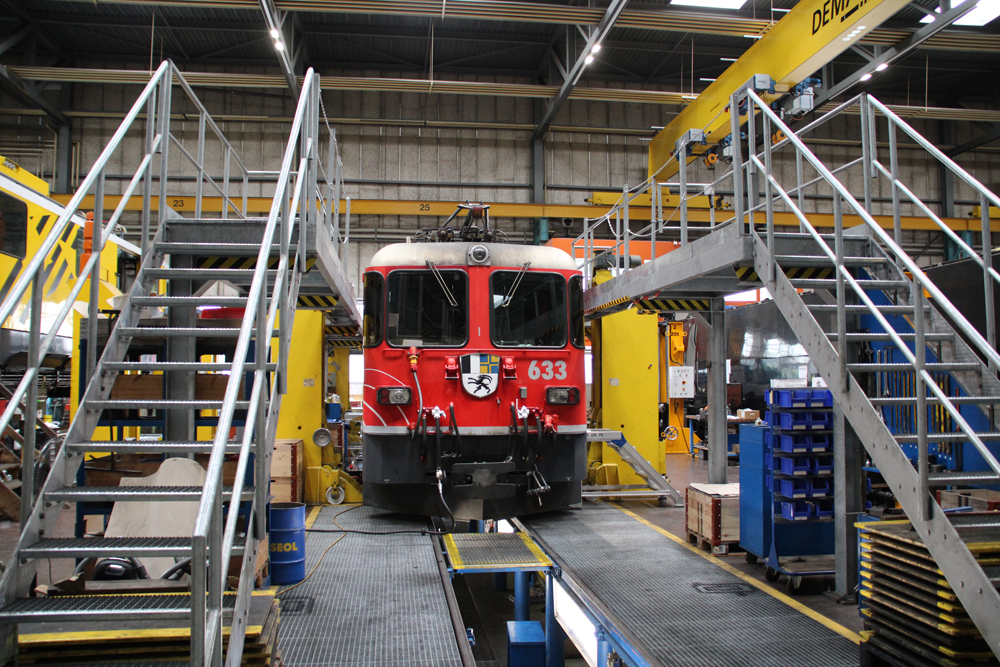Rush-hour trains operate both ways on two separate routes between Baltimore and Washington: Amtrak’s electrified Northeast Corridor via New Carrollton (the Penn Line), and CSX’s Capital Subdivision via Jessup and College Park (the Camden Line – the oldest rail passenger route in the U.S., first operated by Baltimore & Ohio in 1830).
A third line, the Brunswick Line, provides commuter service on CSX’s Cumberland and Metropolitan Subdivisions between Martinsburg, W.Va., and Washington, D.C., with limited service from Frederick, Md., on a branch off of CSX’s Old Main Line.
In 1975, the Maryland Department of Transportation began subsidizing Washington, D.C. commuter trains operated by CSX predecessor Baltimore & Ohio Railroad, and in 1976, began funding Baltimore-Washington commuter trains on the Northeast Corridor operated by Conrail. Amtrak took over the Northeast Corridor service in 1983 when federal law relieved Conrail of operating the trains.
Maryland established a State Railroad Administration in 1976 to oversee the commuter rail subsidies using state and federal funds, purchase new commuter rail equipment, and subsidize state short lines. In 1981, the state legislature voted to continue financing the commuter rail services as long as passenger fares paid for 50 percent of the trains’ revenue. In response, Maryland DOT upgraded service on the B&O routes with refurbished locomotives and cars.
A 1984 marketing study resulted in the branding of the state-supported commuter rail services under the name MARC (Maryland Area Rail Commuter). In 1986, the agency purchased new locomotives and rolling stock for the Northeast Corridor trains. The State Railroad Administration became part of the Mass Transit Administration in 1992.
Today, MARC is the commuter rail arm of the Mass Transit Administration (itself part of the Maryland Department of Transportation), which manages public transportation in the Baltimore area, and provides financial and operating assistance to smaller local transit agencies throughout the state.
MARC trains are operated under contract by Amtrak and CSX Transportation. Over 22,000 rail passengers a day ride MARC, with a total of 5.5 million trips recorded in 2000.
MARC trains operate into two Baltimore stations: Penn Line trains call at Amtrak’s Pennsylvania Station, while Camden Line trains serve Camden Station.
MARC operates the fastest commuter trains in North America, using electric locomotives that race along the Penn Line at speeds of up to 125 miles per hour – the maximum allowable track speed on the Northeast Corridor. Motive power is provided by AEM7’s built in 1986 by EMD/ASEA, and HHP-8’s built in 2001-2002 by Bombardier-Alstom.
Camden and Brunswick Line trains use GP40WH-2 and GP39H-2 diesel locomotives, rebuilt from GP40s by Morrison-Knudsen and MK successor Boise Locomotive. (The diesels can show up on Penn Line trains as well.)
MARC’s electric motors are maintained by Amtrak at its Ivy City engine terminal in Washington. CSX services and repairs MARC’s diesel fleet at the Riverside Shop in Baltimore.
In 2000-2001, MARC received 50 new bi-level passenger cars from Kawasaki Rail Car, Inc., supplementing a fleet of single-level cars built by Nippon Sharyo. (The last remaining Heritage cars – former N&W and PRR 10&6 sleeping cars converted into coaches by Pennsylvania Railroad in 1964 – were retired in 2001, along with parlor cars that had been used on select Brunswick Line trains.)
MARC entered into a cross-honor agreement with Virginia Railway Express that allows ticketed MARC passengers to travel free on reverse-flow VRE trains – trains that leave Washington Union Station before noon and arrive in Washington after noon. Passengers can also connect to Amtrak and the Washington Metro Red Line at Union Station.
At Baltimore Penn Station, MARC passengers can connect to Amtrak and the Penn Station extension of the MTA Central Light Rail system, which links downtown Baltimore and BWI Airport. Penn Line trains also serve BWI Airport at a joint Amtrak/MARC station facility.
On December 17, 2001, MARC began service on a 13.5-mile extension of its Brunswick Line to Frederick, Md., the state’s second largest city. The $56 million project, begin in 1996, encompassed the rebuilding of CSX’s 3-mile Frederick Industrial Track, a connection at Point of Rocks, Md., between CSX’s Old Main Line and Metropolitan Sub, and two new stations.
MARC may be the only U.S. railroad with its own television show. “In Touch With the MTA,” a 30-minute talk show sponsored by the Mass Transit Administration, airs weekly on cable stations in the Baltimore metro area. Launched in 1999, the show provides information and looks at issues affecting mass transit throughout the state.
- Penn Line. Frequent weekday service on Amtrak’s Northeast Corridor between Washington and Baltimore Penn Station. Rush-hour service operates to Perryville, 77 miles from D.C. No service on weekends or major holidays. Serves 13 stations.
- Camden Line. Weekday rush-hour service operates in both directions between Washington and Baltimore Camden Station, 37 miles. Serves 10 stations. No service on weekends or major holidays.
- Brunswick Line. Weekday rush-hour service from Washington to Brunswick, with a handful of trains continuing on to Martinsburg, W.Va., 73 miles. Serves 15 stations. Limited weekday rush-hour service to Frederick on a branch serving two stations. Trains do not operate on weekends or major holidays.
MARC
P.O. Box 8718
BWI Airport, MD 21240-8718
(800) 325-RAIL (325-7245)
Teletype: (410) 539-3497
www.mtamaryland.com













